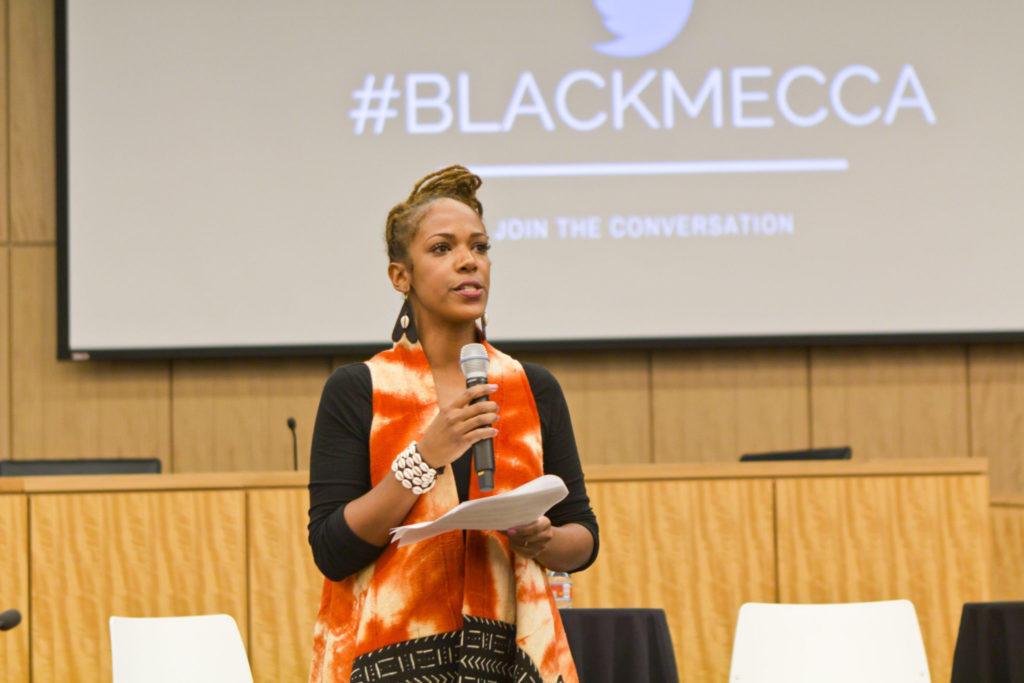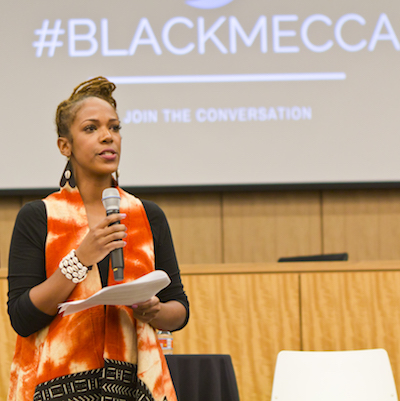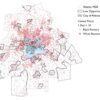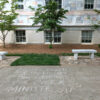On November 9, 2016, Kali-Ahset Amen of the James Weldon Johnson Institute of Emory University opened the “Still the Black Mecca?” symposium with the following remarks, which stand as a powerful clarion call for both reflection and action on the status of Atlanta as a “black mecca.”
In the weeks and months to come Atlanta Studies will publish materials both presented at and building on the symposium that seek to respond to this call and assess the state of Atlanta as black mecca. The first of these materials is a lively discussion on Atlanta’s history from the 1960s through the 1990s between Andrea Young and Maurice J. Hobson.
Racial apartheid is alive and well in Atlanta.
It looks like dispossession.
It looks like indiscriminate incarceration.
It looks like precarious employment, limited upward mobility, resource-poor schools, residential segregation, and persistent black poverty.
It looks like . . . institutionalized . . . collective . . . disposability.
And it’s looking you and me right in the face.
Jim Crow – was a sharp and piercing instrument.
This racial menace is often blunt, but no less deadly.
We are here today to name it.
To parse its structural contours and to plumb its historical depths that we might glean a way forward for this place we know, live, love . . . Atlanta.

Clergyman Robert Schuller once said, “don’t think about all you have lost, but of what you have left to do.”
The Black Mecca: is it already undone?
There are no straightforward answers.
Atlanta attracts African American migration in droves every day.
The city’s black cultural output is exported and celebrated the world over. But there is an important relationship between the commodification of black culture and the killing of black bodies and the erasure of black neighborhoods . . .
in . . . this . . . place.
The specificity of “Atlanta blackness” is in this way staged and performed for the world, against a backdrop of the black body in pain;
of the black working class expropriated of its community wealth and communal memory.
And we are assembled here to reflect on the city’s historical and present-day relationship to the making of black joy . . . and black pain.
It is this dialectical tension that drives our query today.
But what really is the object and purpose?
Here I will plagiarize myself – cribbing from a recent interview: At this symposium, we are concerned with gentrification and its insinuation of black cultural and physical erasure in the inner-city.
What we are exploring is how urban change processes work for or against racial equity. This symposium is designed to interrogate the concrete racial consequences of local development and urban governance, giving visibility to both the scholarly evidence and to grassroots solutions rooted in experiential knowing.
Over the course of today’s sessions, our insightful speakers will help us to look systemically at the obstacles to racial equity, and to imagine how we might employ a framework of multiracial coalition in the difficult work that lies ahead.
We are not searching for final answers today but I do believe that our very presence here reflects a conviction to galvanizing new possibilities for multiracial, queer, and immigrant equity in the Black Mecca that are grounded in political commitments to black and brown thriving.
So I see this gathering today as an actualizing performance – a public enactment of devotion to a common project of equitable re-creation.
This gathering is the evidence of an impetus to work together in transcending the limits of our imagination in order to give form and substance to a city that serves the needs of all of us . . . including our ancestors and those not yet born.
. . . because the very survival of the black mecca as a place where Black Life itself can thrive, is embedded in the fight of the people: its culture workers, activists, teachers, and scholars. In a word – “us”.
I am Kali-Ahset Amen. I come to you as a black woman resident of Stone Mountain, Georgia, and as the assistant director of Emory University’s James Weldon Johnson Institute for the Study of Race and Difference.
On behalf of the organizing team – Deirdre Oakley, Zahra Alabanza, Barbara Combs, and myself – it is our hope that this symposium exemplifies the spirit of scholar-activism practiced in the service of racial justice by James Weldon Johnson and W. E. B. Du Bois on these very same streets a century ago.
Today belongs to you. Today belongs to all of us. Welcome and thank you for coming.
Citation: Amen, Kali-Ahset. “Opening Remarks from Still the Black Mecca?.” Atlanta Studies. February 16, 2017. https://doi.org/10.18737/atls20170216.




